The Failure Law and Control Technology of Large-Section Roadways in Gently Inclined Soft Coal Seams
Abstract
:1. Introduction
2. Site Engineering Overview and Geomechanical Testing
3. Analysis of Non-Uniform Failure Characteristics of Inclined Coal Seams
3.1. Loose, Fractured, and Anchored Composite Supporting Body of the Surrounding Rocks of the Roadway
3.2. Stress Failure Analysis of Mining Roadways in Inclined Coal Seams
4. Numerical Simulation Analysis of the Failure of Roadways
5. Discussion of Research Results
6. Measurement of the Non-Uniform Failure Control Technology and Application Effects of Inclined Rock Strata
7. Conclusions
- (1)
- The broken zone of surrounding rocks formed an anchoring composite supporting body with the support system under stress and disturbances after the roadway was excavated. The anchoring composite supporting body could improve the mechanical properties of the support system and ensure the stability of the surrounding rocks of the roadway.
- (2)
- The proportions of coal and rock masses in different regions of the surrounding rocks were quite different in the roadway of inclined coal seams. The mechanical properties of the support system were improved under the anchored composite supporting body; however, the mechanical strength of coal masses was small. Different creep failure occurred in coal and rock masses under high stress, which results in non-uniform failure of the roadway.
- (3)
- The damaged area of the roof showed that the centerline was inclined to the high side, and that of the floor presented that the roadway centerline was inclined to the low side. There were some differences between the two sides. The technical measures for grouting reinforcement, strengthening support, and pressure-relief grooving were put forward and verified by numerical simulations.
- (4)
- The roof adopted double-hole grouting. The depth of grouting holes was 1300 and 1500 mm, with a spacing of 900 mm and a row spacing of 1800 mm. The pressure-relief groove was located in the area where the roadway centerline was inclined to the 1000 mm area of the low side, with a groove depth of 1500 mm and a width of 500 mm. The field application effect is good, which provides a reference for similar projects.
Author Contributions
Funding
Institutional Review Board Statement
Informed Consent Statement
Acknowledgments
Conflicts of Interest
References
- Zhang, T. Discussion on the Current Situation and Development Trend of Energy Utilization in China. Territ. Nat. Resour. Study 2021, 5, 76–78. [Google Scholar]
- Zheng, C.; Zhang, Y.; Long, L. Study on National Principal Energy Consumption Structural Modulation and Optimization in New Era. Col. Geo. Chi. 2021, 33, 49–51. [Google Scholar]
- Hou, C.J. Roadway Surrounding Rock Control; China University of Mining and Technology Press: Xuzhou, China, 2013. [Google Scholar]
- Xu, B. Research on the Occurrence Law of Rock Pressure and Surrounding Rock Control Mechanism in the Mining Roadway of the Gently Inclined Thin Coal Seams; Chongqing University: Chongqing, China, 2017. [Google Scholar]
- Zhao, D.; Xu, T.; Liu, W. Calculation of Bed Separation Under Horizontally and Generally inclined Coal Seam Mining. China J. Rock Mech. Eng. 2005, 24, 5767–5772. [Google Scholar]
- Zhao, S.; Wang, X.; Fan, G. Pillar size optimization design of isolated island panel gob side entry driving in deep inclined coal seam-case study of pingmei No.6 coal seam. J. Geophys. Eng. 2019, 15, 15. [Google Scholar]
- Wang, X.F.; Wang, Y.; Zhang, D.S. Enhanced support technology for key area of the roadway in large inclined angle “three-soft” coal seam. J. Min. Saf. Eng. 2017, 34, 6. [Google Scholar]
- Ma, L. Support stability mechanism in a coal face with large angles in both strike and dip. J. S. Afr. Inst. Min. Met. 2015, 115, 599–606. [Google Scholar] [CrossRef]
- Liu, K. Research and Application of Coal Wall Stability in Fully Mechanized Face with Large Inclination Angles and High Mining Heights; Xi’an University of Science and Technology: Xi’an, China, 2017. [Google Scholar]
- Kulakov, V.N. Stress state in the face region of a steep coal bed. J. Min. Sci. 2015, 9, 161–168. [Google Scholar] [CrossRef]
- Jawed, M.; Sinha, R. Design of rhombus coal pillars and support for roadway stability and mechanizing loading of face coal using SDLs in a steeply inclined thin coal sea ma technical feasibility study. Arab. J. Geo 2018, 15, 415. [Google Scholar] [CrossRef]
- Chen, J.; Yan, R.; Liu, K. Asymmetric sefor mation mechanism of roadway at steeply inclined thick coal seam. J. China Coal Soc. 2018, 43, 3007–3015. [Google Scholar]
- Zhang, J. The fracture mechanism of main roof stratum and strong mine pressure control method in long wall mining of steeply inclined coal seam in Wangjiashan colliery. Chin. J. Rock Mech. Eng. 2018, 37, 1776. [Google Scholar]
- Zhang, W.; He, Z.M.; Zhang, D.S. Surrounding rock deformation control of asymmetrical roadway in deep three—soft coal seam: A case study. J. Geophys. Eng. 2018, 15, 1917–1928. [Google Scholar] [CrossRef] [Green Version]
- Wu, H. Non-Uniform Deformation Evolution Law and Stability Control of the Roadway in the Deep Inclined Rock Strata; China University of Mining and Technology: Xuzhou, China, 2014. [Google Scholar]
- Gale, W. Stress distributions and rock failure around coal mine roadways. Int. J. Rock Mech. Min. Sci. Géoméch. Abstr. 1987, 24, 165–173. [Google Scholar] [CrossRef]
- Gale, W. Strata control utilizing rock reinforcement techniques and stress control methods, in Australian coal mines. International. Min. Eng. 1991, 150, 247–253. [Google Scholar]
- Yang, H.; Bai, J.; Wang, X. Soft roof failure mechanism and supporting method for gob—Side entry retaining. Minerals 2015, 5, 707–722. [Google Scholar] [CrossRef]
- Wang, M.; He, Z.; Zhang, D. Stability and control technology of overlying structure in gob-side entry driving roadways of deep inclined coal seam. J. Min. Saf. Eng. 2015, 32, 426–432. [Google Scholar]
- Chen, X.; Wang, M. Research on surrounding rock deformation characteristics of gob-side entry driving in deep inclined coal seam and its control technology. J. Min. Saf. Eng. 2015, 32, 485–490. [Google Scholar]
- Gao, H.; Yang, S.; Liu, X. Hollow Inclusion In-situ Stress Test Method and Engineering Application. Coal Eng. 2015, 47, 4. [Google Scholar]
- Cai, M.F. Rock Mechanics and Engineering; Science Press: Beijing, China, 2022. [Google Scholar]
- Guo, Q.L.; Yang, S.X. Specification of Hydraulic Fracturing and Overcoring Method for In-Situ Stress Measurement DB/T 14-2018; China Seismological Bureau: Beijing, China, 2018. [Google Scholar]
- Zhang, Y.D. Research on the Bearing Characteristics of the Anchored Composite Bearing Body and Its Application in the Design of Roadway Bolt Supports; China University of Mining and Technology: Xuzhou, China, 2013. [Google Scholar]
- Cheng, L. Influence Law of Bolt Length on Bearing Characteristics of Anchored Composite Carrier and Study on Length Design; China University of Mining and Technology: Xuzhou, China, 2014. [Google Scholar]
- Zhang, Y.; Cheng, L.; Yang, J. Bearing Characteristic of Composite Rock-bolt Bearing Structure Under Different Bolt Support Density. J. Min. Saf. Eng. 2015, 32, 6. [Google Scholar]
- Dong, Y.X. Research on Asymmetric Deformation Mechanism and Control Technology of the Roadway in Inclined Soft Coal Seams; China University of Mining and Technology: Xuzhou, China, 2019. [Google Scholar]
- Zhang, Y.Z. Chinese Rhino 5.0 Complete Practical Technical Manual; Tsinghua University Press: Beijing, China, 2016. [Google Scholar]
- Xu, Y.C.; Yang, Y. New Progress on Floor Grouting Reinforcement Technology of Water Control in Coal Mining Face. Coal Sci. Technol. 2014, 42, 98–101, 120. [Google Scholar]
- Du, X.W. Research on Surrounding Rock Stability and Control Technology of Gob-Side Entry Retaining in the Fully Mechanized Caving Face of Gaohe Energy; China University of Mining and Technology: Xuzhou, China, 2019. [Google Scholar]
- Huang, D.F.; Wang, Z.M.; Yang, B. Construction technology of formation grouting water blocking and reinforcement. Chi. Uni. Min. Tecy. Pre. 2003, 1. [Google Scholar]
- Wang, P.; Ye, S.F.; Wang, H. Omni-directional Comprehensive Grouting Reinforcement Technology for Underground Tunnel. Saf. Coal Min. 2013, 4, 3. [Google Scholar]

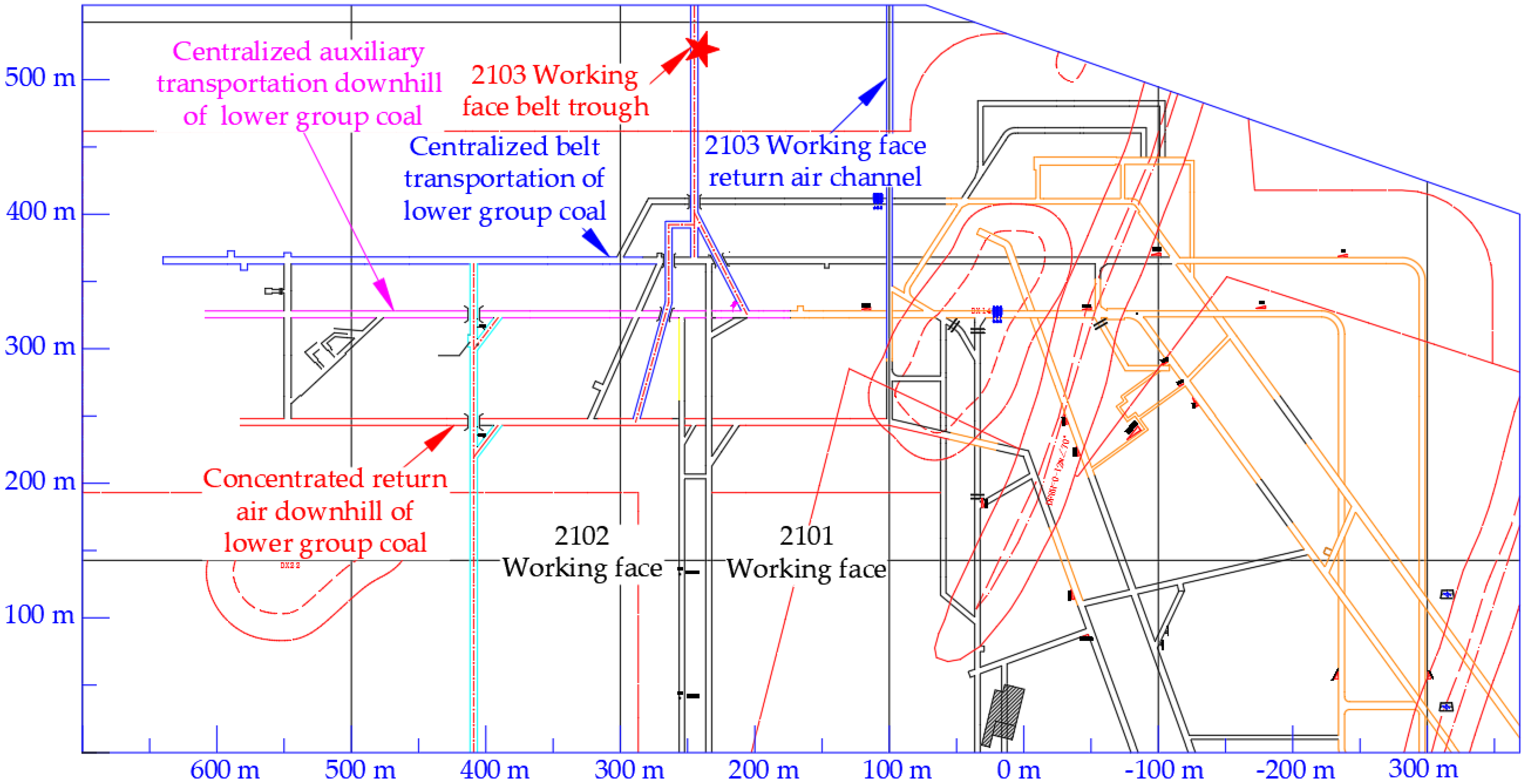

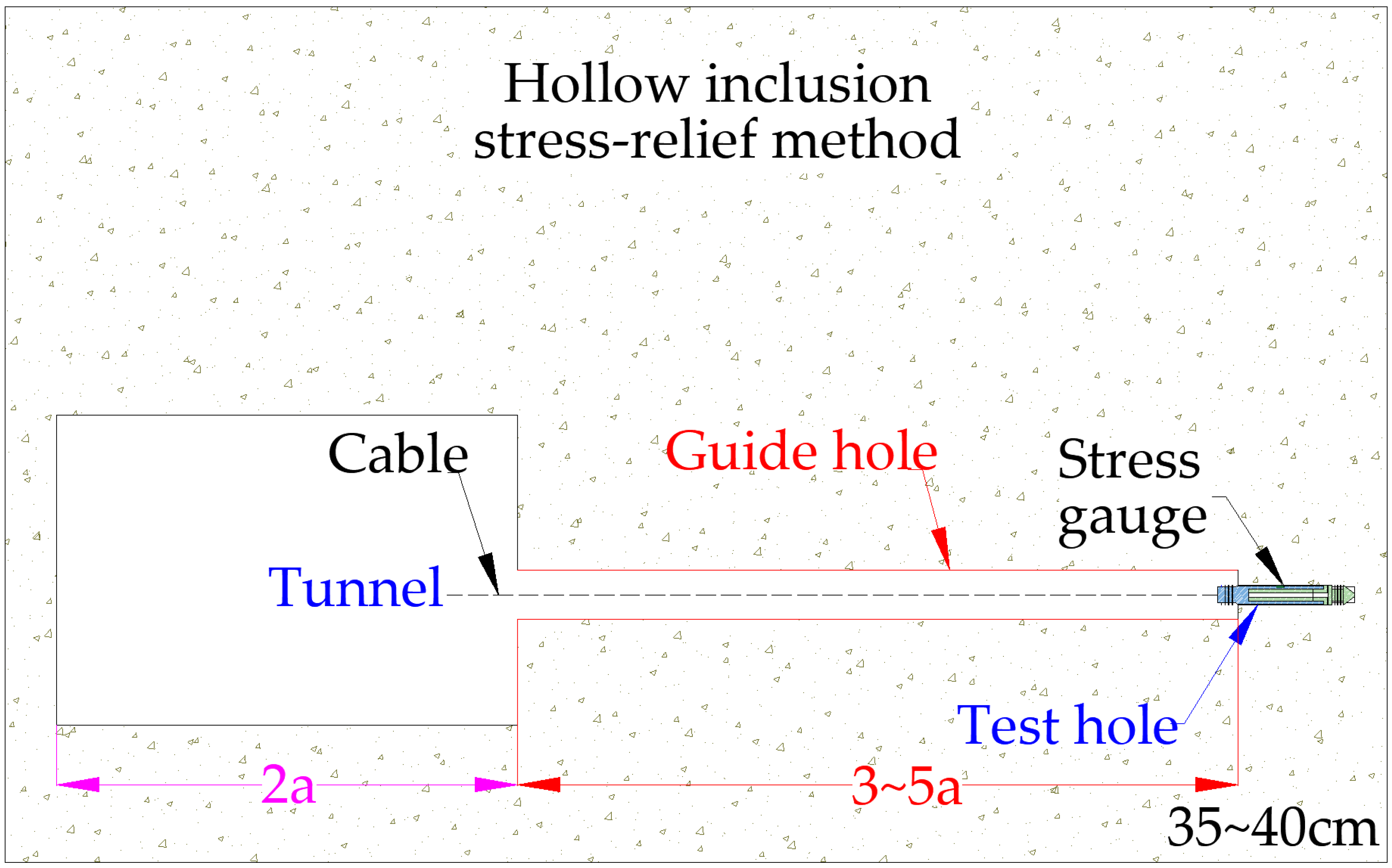
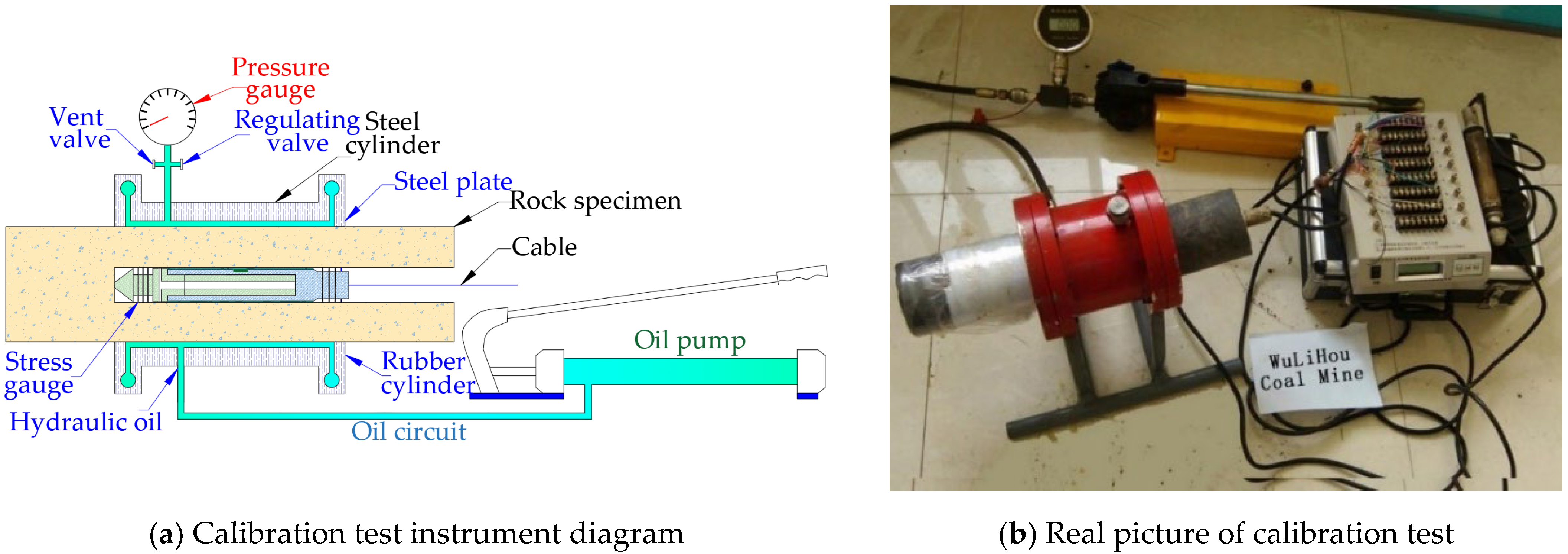


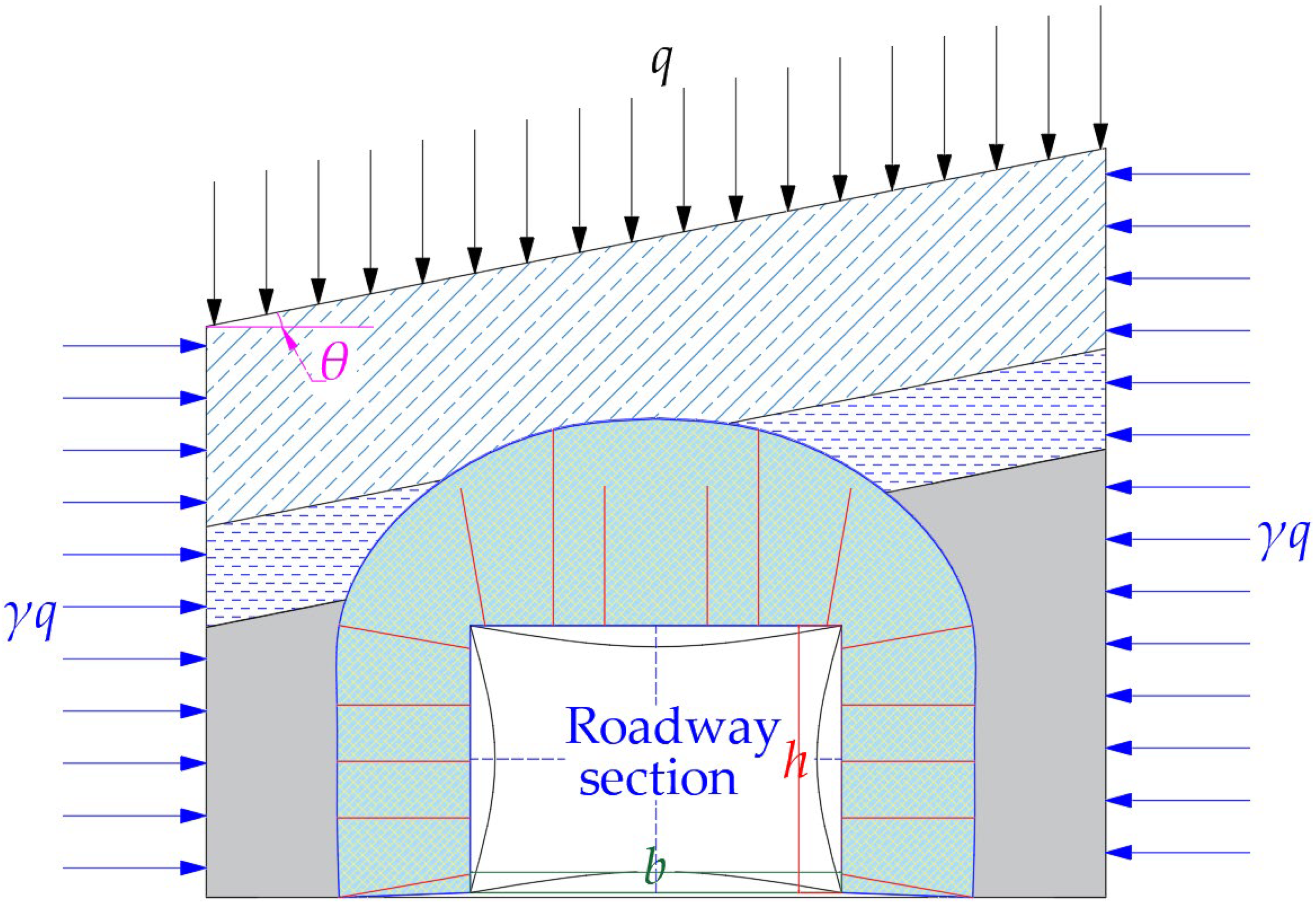




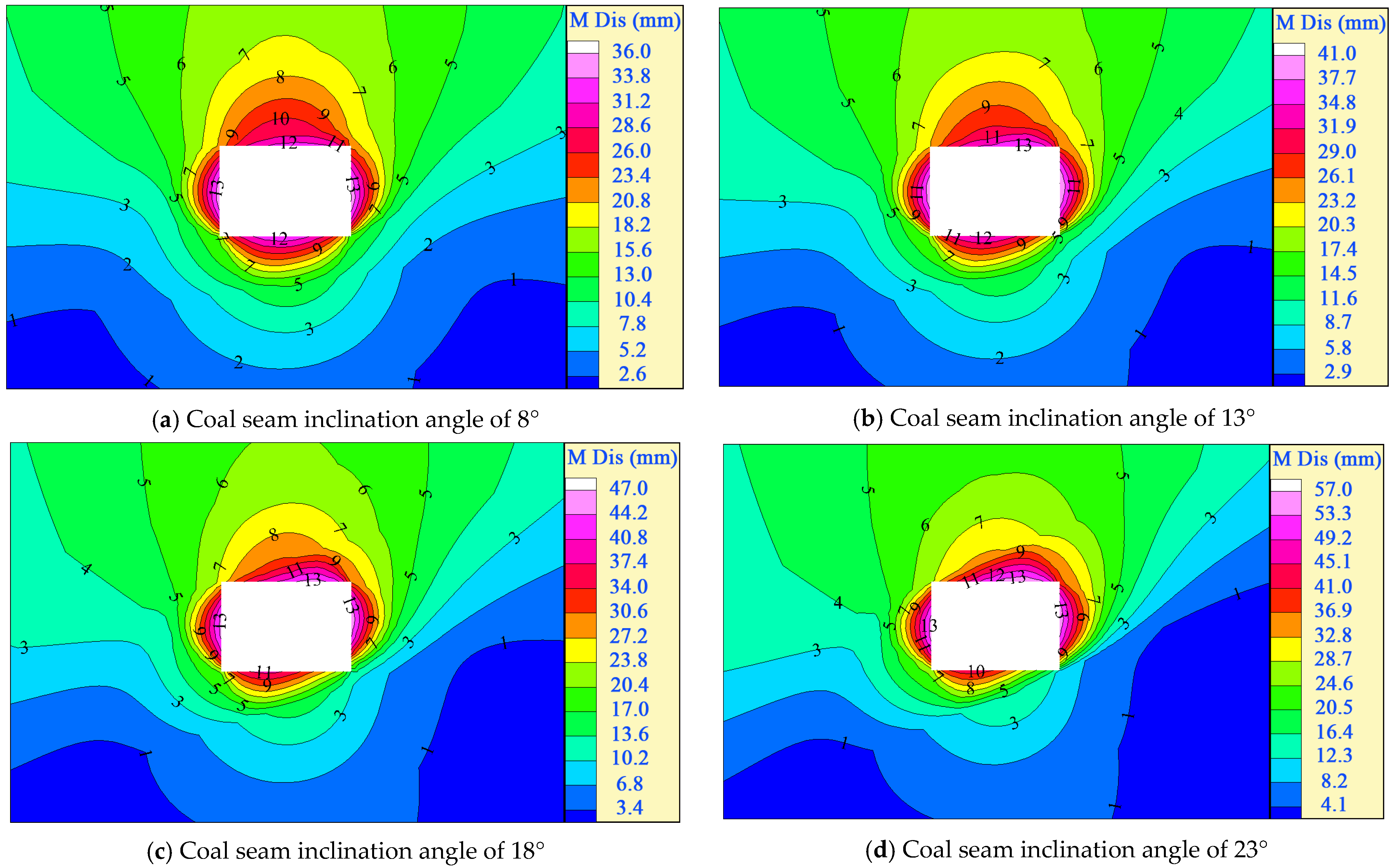

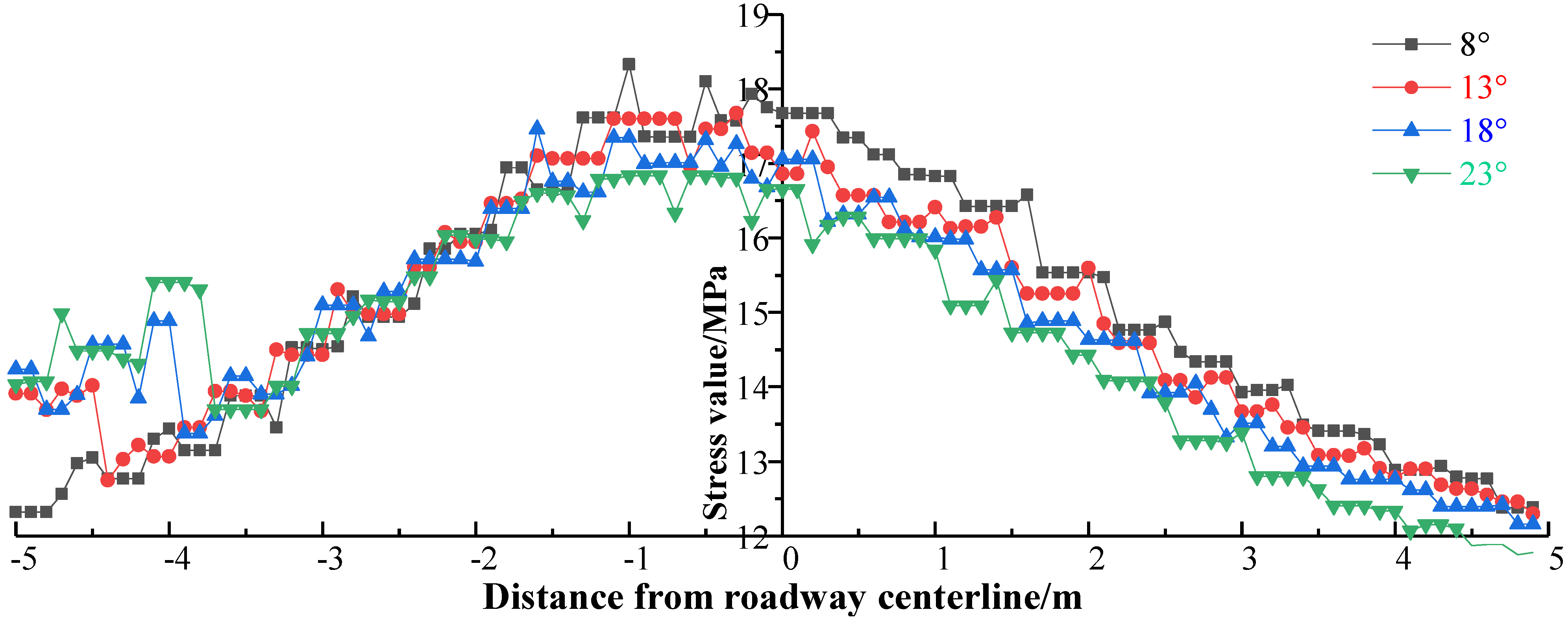

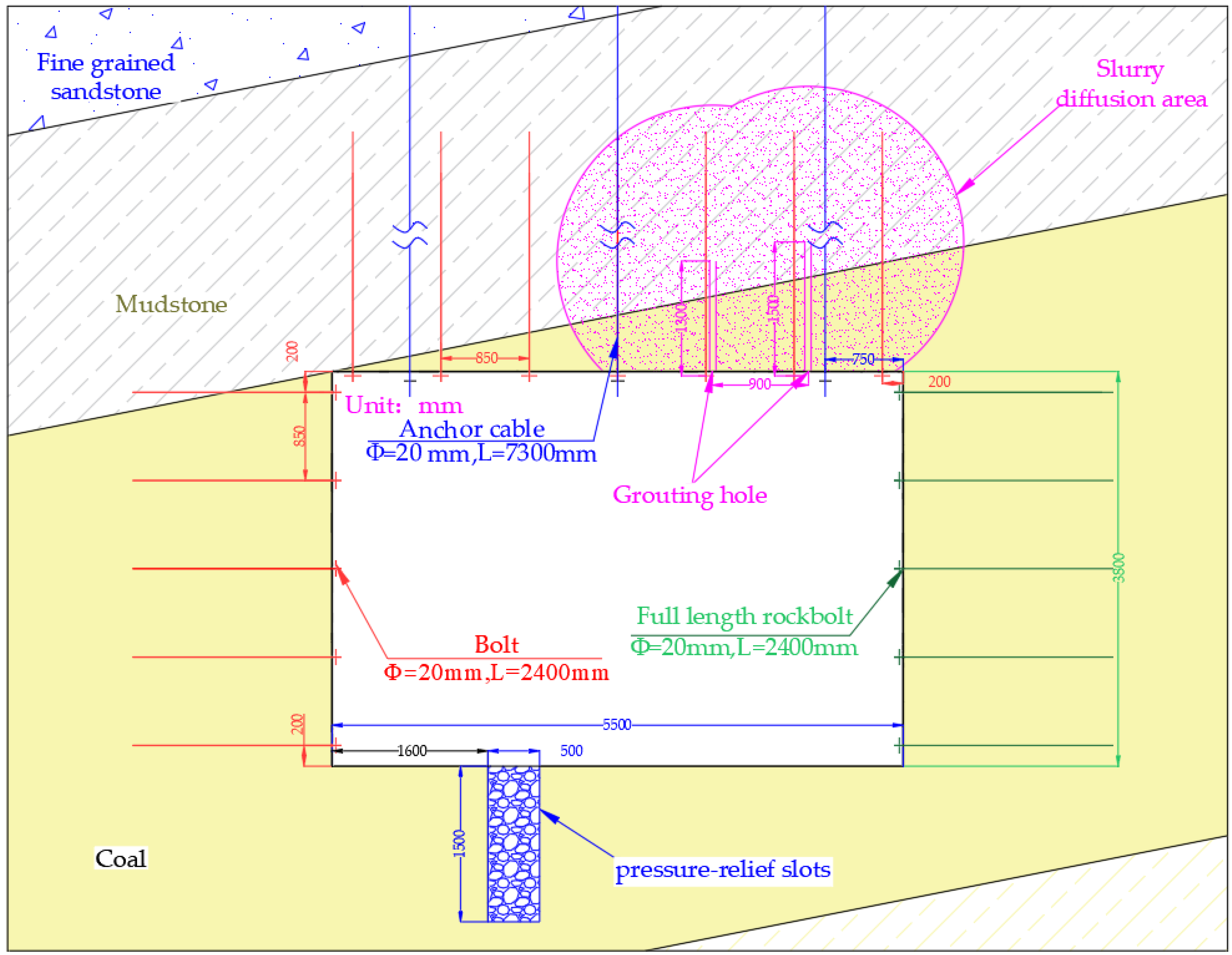

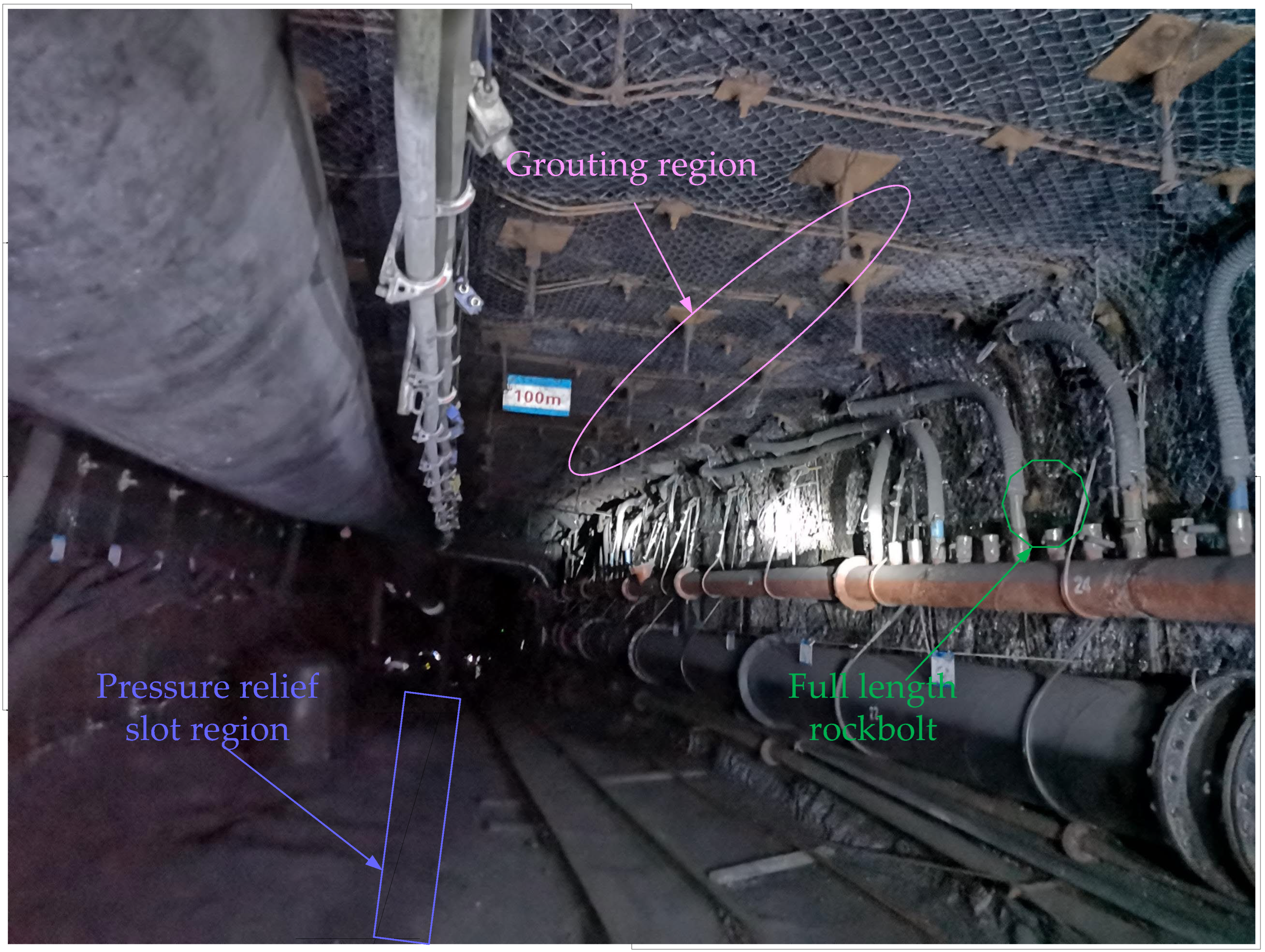
| Lithology | H (m) | D (kg·m−3) | CS (MPa) | B (GPa) | TS (MPa) | S (GPa) | C (MPa) | F (°) |
|---|---|---|---|---|---|---|---|---|
| Fine-grained sandstone | 297 | 2631 | 114.48 | 13.85 | 4.32 | 3.04 | 6.39 | 43.99 |
| Mudstone | 301 | 2528 | 48.96 | 6.11 | 1.52 | 1.21 | 2.76 | 34.2 |
| 15 coal seam | 307 | 1468 | 5.50 | 0.75 | 0.18 | 0.17 | 1.12 | 28 |
| Mudstone | 4.4 | 2526 | 30.4 | 3.00 | 1.38 | 0.84 | 2.31 | 32.14 |
| Fine-grained sandstone | 4.7 | 2624 | 66.43 | 12.16 | 7.01 | 2.07 | 8.38 | 41.22 |
Publisher’s Note: MDPI stays neutral with regard to jurisdictional claims in published maps and institutional affiliations. |
© 2022 by the authors. Licensee MDPI, Basel, Switzerland. This article is an open access article distributed under the terms and conditions of the Creative Commons Attribution (CC BY) license (https://creativecommons.org/licenses/by/4.0/).
Share and Cite
Ma, Q.; Zhang, Y.; Zhang, X.; Li, Z.; Song, G.; Cheng, J.; Gao, K. The Failure Law and Control Technology of Large-Section Roadways in Gently Inclined Soft Coal Seams. Processes 2022, 10, 1993. https://doi.org/10.3390/pr10101993
Ma Q, Zhang Y, Zhang X, Li Z, Song G, Cheng J, Gao K. The Failure Law and Control Technology of Large-Section Roadways in Gently Inclined Soft Coal Seams. Processes. 2022; 10(10):1993. https://doi.org/10.3390/pr10101993
Chicago/Turabian StyleMa, Qi, Yidong Zhang, Xingrun Zhang, Zexin Li, Guangyuan Song, Jingyi Cheng, and Kuidong Gao. 2022. "The Failure Law and Control Technology of Large-Section Roadways in Gently Inclined Soft Coal Seams" Processes 10, no. 10: 1993. https://doi.org/10.3390/pr10101993
APA StyleMa, Q., Zhang, Y., Zhang, X., Li, Z., Song, G., Cheng, J., & Gao, K. (2022). The Failure Law and Control Technology of Large-Section Roadways in Gently Inclined Soft Coal Seams. Processes, 10(10), 1993. https://doi.org/10.3390/pr10101993






